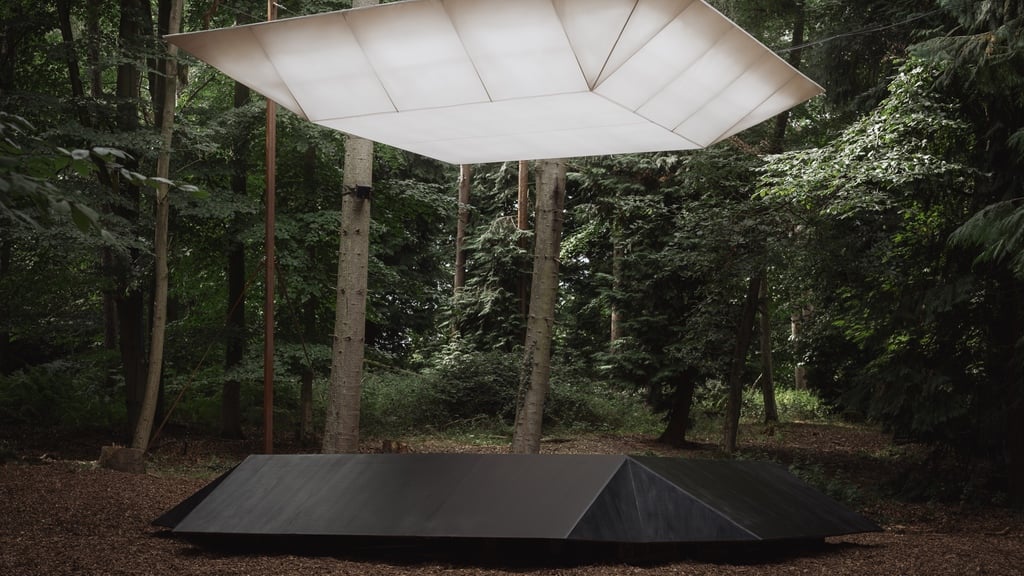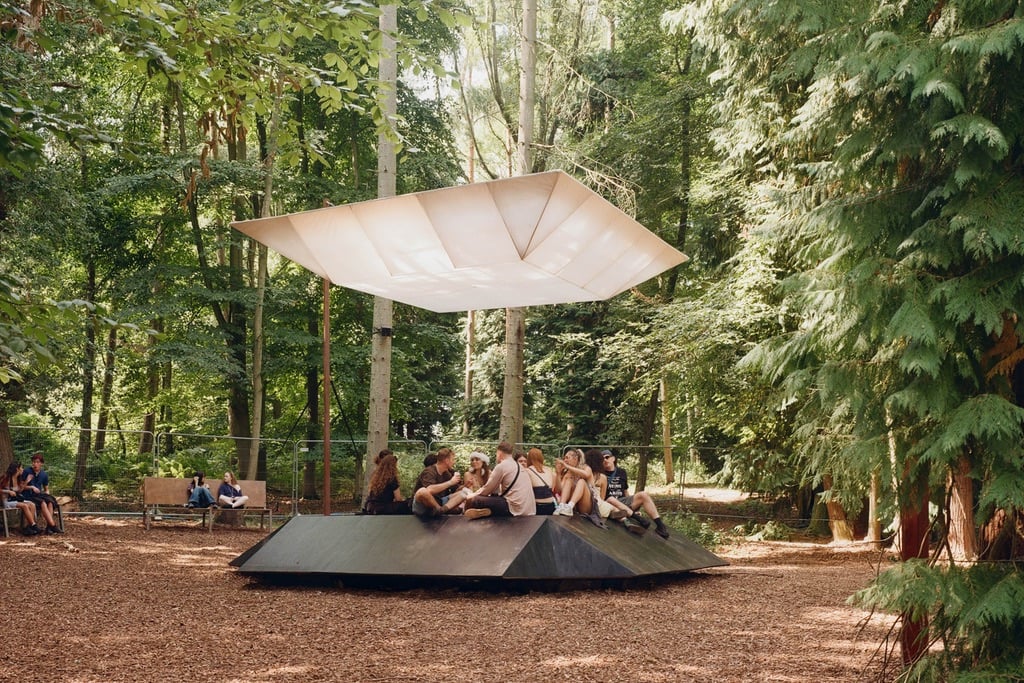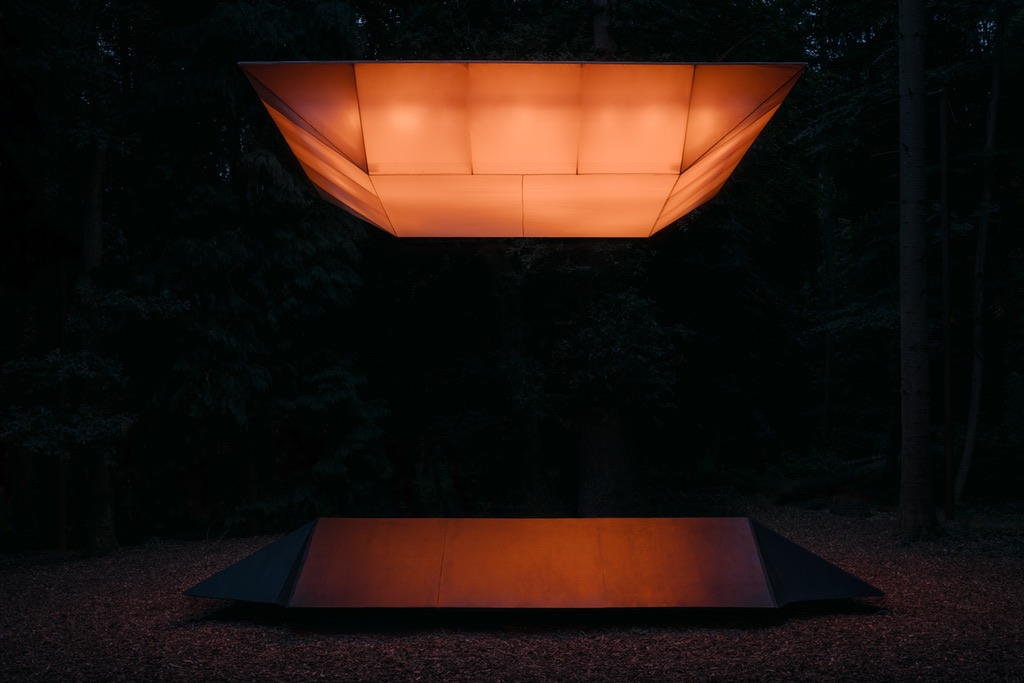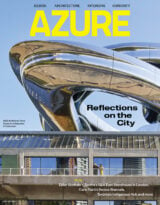
An unidentified flying object debuted during this past August’s edition of Houghton Festival, the four-day lineup of musical performances and art installations held each summer in Norfolk, U.K. An architectural folly in two parts — a black podium and a spacecraft-like canopy that hovers several metres above it — Pulse is the otherworldly brainchild of architect Benni Allan, founder of London firm EBBA. But for all its surreal, extraterrestrial appeal, the glowing attraction didn’t exactly fly in from a galaxy far, far away. Instead, it time-travelled from the turn of the 20th century: The top half of the structure, constructed from plywood sheets wrapped in a translucent waterproof textile, is based on Alexander Graham Bell’s tetrahedral kites.

Otherwise, Pulse is as rooted in the earth as it is reaching for the sky. Environmental sensors capture the vibrations of surrounding trees and translate them into sound waves and light pulses. In between concerts, people gathered on the podium to take part in an experience that combined the best parts of forest bathing and sound therapy. (Well-being is one of Allan’s major focuses.) Thanks to its interactive relationship with its setting, the cosmic spectacle found a way to connect people with nature rather than distract them from it.

And while the rest of the festival wrapped up this summer, the piece will remain a permanent fixture of its site — charting the steady heartbeat of the forest through the changing seasons ahead.
EBBA’s Music Festival Installation Turns the Woods Into a Headlining Act
A floating tetrahedron got pulses racing by tapping into the heartbeat of the forest.
